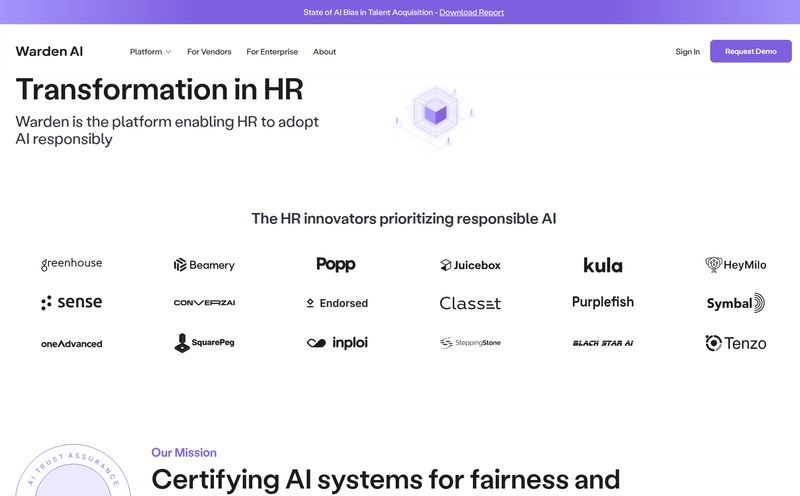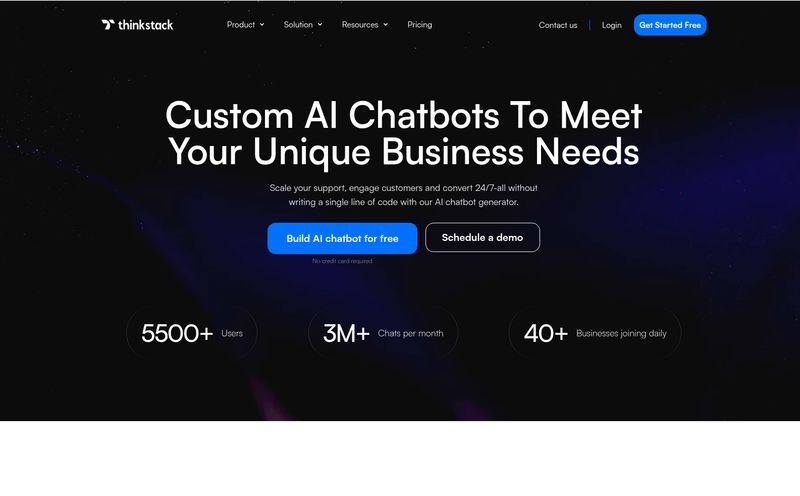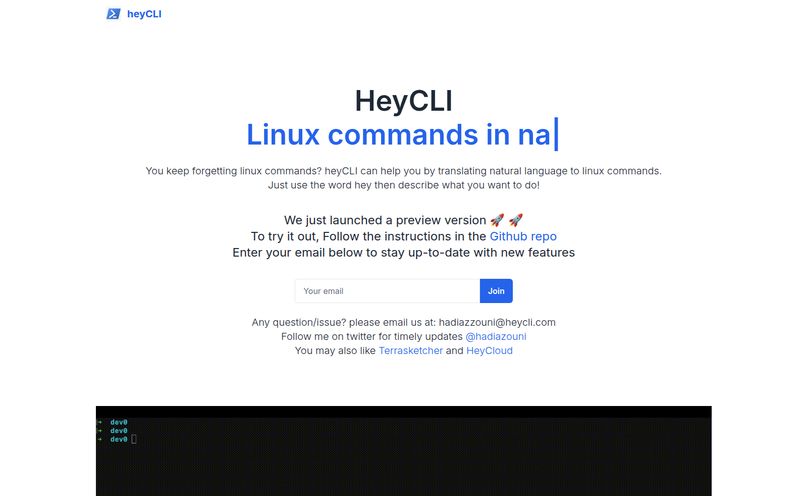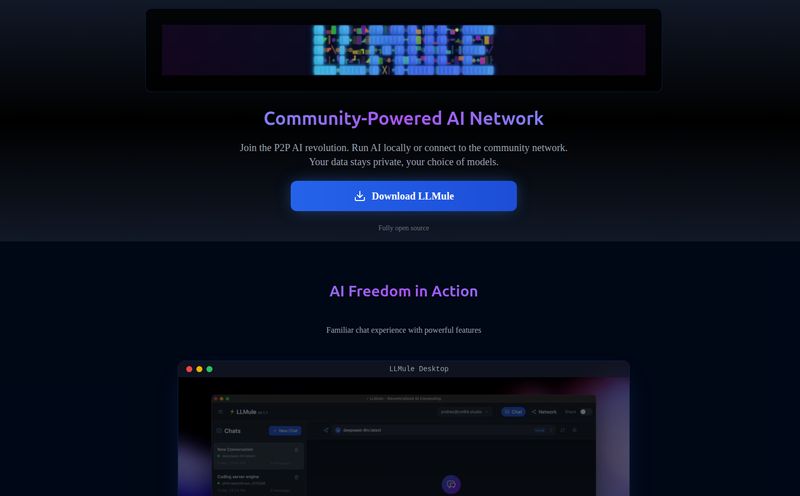If you've been in the SEO or web dev game for more than a minute, you've seen the classic standoff. It’s a tale as old as time, or at least as old as the first GeoCities page. The marketing team needs a new landing page for a campaign that starts tomorrow. The development team is buried in a sprint, fixing a critical bug and couldn't possibly touch the homepage without a two-week ticket and a dozen meetings.
The result? Frustration. Missed deadlines. And maybe a hastily coded page by a marketer who knows just enough HTML to be dangerous. We’ve all been there, either on the requesting or the receiving end. It’s a structural problem, a bottleneck baked into the very way we’ve traditionally built websites.
For years, the promise of the “headless CMS” has been floated as the silver bullet. Decouple the content (the “body”) from the presentation layer (the “head”). It’s a great idea, but in practice, it often just meant marketers were handed a bunch of form fields and developers still had to wire everything up. The bottleneck just moved.
But recently, I’ve been playing around with a tool that feels… different. It’s called Prismic, and it’s not just another headless CMS. It’s a headless page builder. And that small distinction, my friends, makes all the difference.
So, What is Prismic, Really?
Imagine you’re building with high-tech LEGOs. The developers are the master builders who design and create the individual, perfect, unbreakable bricks. These could be anything: a hero section, a customer testimonial block, a product card, an email signup form. They define what each brick can do and how it should look to stay perfectly on-brand.
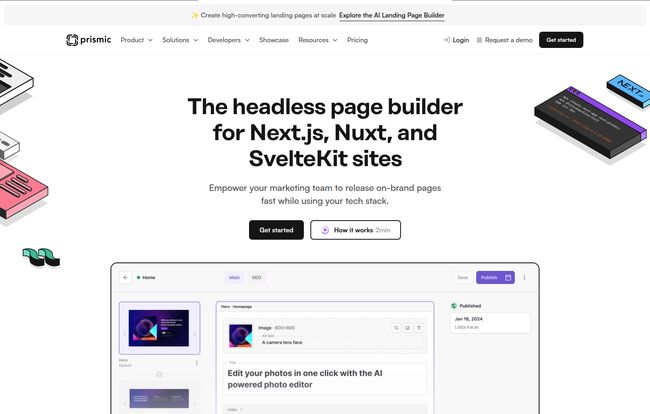
Visit Prismic
Then, they hand that box of custom LEGOs over to the marketing team. Using Prismic's Page Builder, the marketers can now assemble those bricks in any order they want to build entire pages. A landing page for that flash sale? Done. A new blog post with a unique layout? Easy. They can drag, drop, and rearrange to their heart's content, without ever needing to write a line of code or bug a developer.
It’s built to work slickly with modern JavaScript frameworks like Next.js, Nuxt, and SvelteKit, which are already the darlings of the performance-focused web development world. So you're not just getting an easier editing experience; you're getting it on top of a lightning-fast, modern tech stack. That’s a huge win for SEO and user experience.
A Peace Treaty for Marketing and Development Teams
I’ve always felt the best tools are the ones that solve human problems, not just technical ones. And the friction between content creators and code creators is a massive human problem in many organizations.
For the Marketers: Your Content Kingdom Awaits
The freedom Prismic offers to content teams is honestly a game-changer. The Page Builder is visual. You see what you're creating as you create it. You can build out new campaign pages, spin up content for A/B tests, or update a featured section on the homepage without filing a single ticket. The system has guardrails—you can only use the components the developers have approved—so you can’t accidentally paint the homepage purple or break the entire site layout. It's autonomy without the anxiety. You can even simulate and preview your changes on any device before hitting that glorious “publish” button.
For the Devs: Ship It and (Almost) Forget It
Now for my fellow tech-heads. Your first reaction might be skepticism. Another tool to manage? But here’s the magic: Prismic is designed to reduce your workload. You build the component library once, and you build it right. With built-in type-safety (shout out to TypeScript users!), the content from the CMS is predictable and reliable, which means fewer bugs from unexpected data structures.
The local developer tool, Slice Machine, lets you build and test these components in isolation before ever pushing them to the CMS. Once the system is set up, you are effectively freed from the endless cycle of minor content tweaks. You can focus on building new features, improving performance, and doing the deep, interesting work you signed up for. You're no longer a content concierge; you’re an architect.
Let's Talk Money: The Prismic Pricing Tiers
Alright, so what's the damage? This is often where great tools become inaccessible. I was pleasantly surprised with Prismic's approach. It scales pretty logically, and they have a genuinely useful free tier.
Here’s a quick breakdown of their monthly plans as of my last check:
| Plan | Price (Monthly) | Who It's For |
|---|---|---|
| Free | $0 | Developers, personal sites, or just kicking the tires. It's surprisingly generous. |
| Starter | $10 / month | Small teams ready to get serious with custom branding and a few users. |
| Small | $25 / month | Growing teams that are publishing more frequently and need more seats. |
| Medium | $150 / month | Established teams that are really scaling their content operations. |
| Enterprise | Custom | Large companies needing all the bells and whistles like advanced security, support, and SLAs. |
The free plan is more than enough to build a full proof-of-concept or run a personal blog. I really appreciate that. It lets you properly evaluate the tool before you have to pull out a credit card.
My Honest Take: The Good and The... Considerations
No tool is perfect, and a review isn't honest without looking at both sides. After spending some real time with it, here's my take.
What I absolutely love is the empowerment. Seeing a marketer's eyes light up when they realize they can launch a page themselves is a pretty cool moment. The developer experience is also top-notch. They clearly respect developers' time with things like the Slice Machine and robust SDKs. The integration with Next.js feels almost native. It’s a joy to work with.
Now, it's not a magic wand. There's an initial setup, for sure. Developers have to invest time upfront to build out that component library. You can’t just install it and have a full website in five minutes like you might with a Squarespace or an old-school WordPress theme. This is a professional tool for professional teams. Also, if your team isn't familiar with the concept of a headless CMS, there can be a slight mental shift. It requires a bit of education to understand why you can't just change a font color on one page (because that's controlled by the code, as it should be!). But in my opinion, these are small hurdles for a massive long-term gain in efficiency and sanity.
Frequently Asked Questions About Prismic
- Is Prismic a full replacement for WordPress?
- It can be, but they solve problems differently. WordPress is a monolithic CMS where the backend and frontend are tightly coupled. Prismic is a headless page builder that gives you the content and editing tools, but you bring your own frontend (like a Next.js site). It’s generally more flexible and performant for modern web applications.
- Do I need to be a developer to use Prismic?
- To set it up, yes. A developer needs to create the project, define the content models (Slices), and build the website code. But once it's set up, the day-to-day content creation and page building is designed specifically for non-developers like marketers and content managers.
- What if I'm not using Next.js or Nuxt?
- While Prismic has amazing support for Next.js, Nuxt, and SvelteKit, it's still a headless CMS at its core. It has a REST API and GraphQL endpoint, so you can technically integrate it with any framework or technology that can fetch data. The experience just might be a bit less streamlined.
- Is the free plan actually useful, or is it just a demo?
- It's very useful. You get one user and can build a full, public-facing website with it. It's perfect for a personal portfolio, a blog, or a proof-of-concept for a larger project. There are no time limits, which is fantastic.
- Can you schedule content to be published?
- Yes! The ability to create content and schedule it to go live at a future date is a feature that marketers love, especially for coordinating campaigns. This is available on the paid plans.
Final Verdict: Is Prismic the Future?
Look, the way we build for the web is changing. We demand faster sites, better security, and more agile workflows. The old ways are starting to show their age. Prismic feels like a tool built for this new reality. It understands the roles on a modern web team and provides a powerful, flexible bridge between them.
If you're a developer tired of content change requests, or a marketer tired of waiting for developers, you owe it to yourself to give Prismic a spin. It might just be the peace treaty your team has been waiting for.
